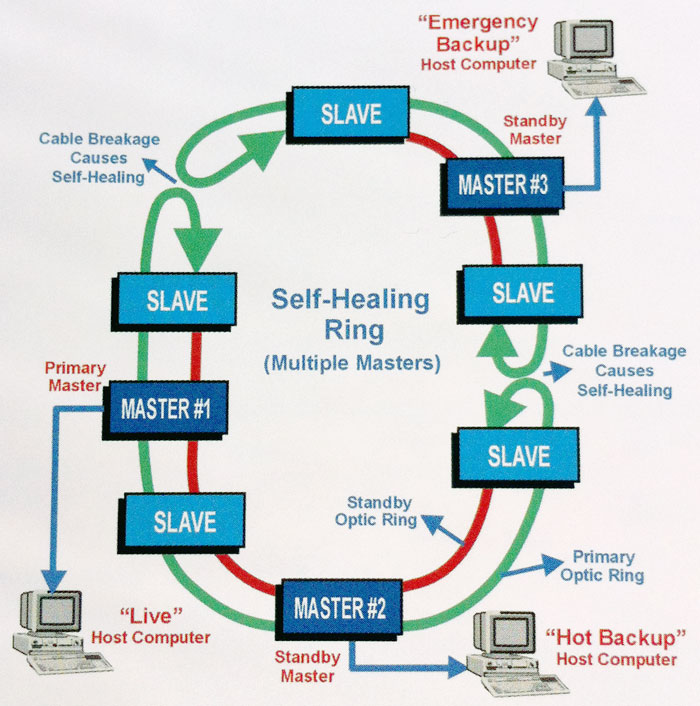Why You Should Choose of a Fiber Optic Security System for Modern Security Solutions
Why You Should Choose of a Fiber Optic Security System for Modern Security Solutions
Blog Article
The Ultimate Guide to Fiber Optic Protection Systems for Your Business
In a period where security problems are critical for businesses, comprehending the complexities of fiber optic modern technology can be transformative. This guide describes exactly how incorporating fiber optic security systems not only improves information security but also provides advantages like resistance to interference and real-time surveillance capabilities.
Recognizing Fiber Optic Modern Technology

The core of a fiber optic cable television is composed of a thin glass or plastic center, surrounded by a cladding layer that mirrors light back into the core. Single-mode fibers are made for long-distance transmission, while multi-mode fibers are appropriate for much shorter distances, frequently utilized within buildings.
Optical fiber are not just much faster yet likewise a lot more safe and secure than standard wiring. Their integral resistance to electro-magnetic interference and the problem of taking advantage of the signal without detection make them a recommended option for services prioritizing information stability and safety and security. As companies significantly rely upon protected and reliable interaction systems, recognizing fiber optic technology becomes necessary for educated decision-making.
Trick Advantages of Fiber Optic Security
When thinking about safety and security options for a business, the benefits of fiber optic systems are particularly compelling. Primarily, fiber optic technology uses outstanding information transmission rates and bandwidth capability, making it optimal for handling high-resolution video feeds from security cams. This capability ensures that protection workers receive real-time information, improving total feedback times to possible protection hazards.
Furthermore, fiber optic cable televisions are inherently resistant to electromagnetic interference, which can compromise the honesty of traditional copper-based systems. This resistance ensures that the information sent remains safe and nonstop, providing a much more trusted safety and security framework. Additionally, optical fiber are less at risk to physical damage, as they are made from glass rather than metal, lowering upkeep expenses and downtime.
Fiber optic systems supply improved cybersecurity functions, including file encryption capabilities that protect delicate data from unauthorized accessibility. Collectively, these advantages make fiber optic safety and security systems a robust option for businesses seeking to boost their safety steps.
Installment Process and Considerations
Considering the complexities entailed, the setup procedure of fiber optic security systems calls for mindful planning and execution. The preliminary action entails a comprehensive site analysis to recognize ideal locations for cabling and devices. This analysis needs to take into consideration environmental factors, existing framework, and possible susceptabilities.

Furthermore, the setup has to comply with regional building regulations and sector standards. This might consist of coordinating with various stakeholders such as building supervisors, IT groups, and protection workers to guarantee smooth assimilation with existing systems.
Post-installation, rigorous testing is necessary to validate system performance and recognize any kind of concerns that might arise. By focusing on these considerations during the setup procedure, businesses can ensure a robust and efficient fiber optic safety and security system that fulfills their particular security demands.
Latest Technologies in Fiber Optic Safety
Recent innovations in fiber optic description innovation have actually dramatically enhanced the abilities of security systems for companies. One of one of the most noteworthy technologies is the combination of fiber optic sensing units that can spot resonances and invasions along the border of a center. These sensing units provide real-time tracking, allowing quick feedback to prospective violations.
Additionally, the growth of distributed fiber optic sensing modern technology allows for the continuous surveillance of huge areas with a single fiber cord. This technique not just decreases setup expenses however also enhances the reliability of checking systems by getting rid of the requirement for several, separate sensors.
In addition, developments in multiplexing strategies have enabled services to transmit substantial amounts of data over fiber optic networks, improving the abilities of video clip security systems. High-definition video feeds can currently be sent over fars away without loss of quality, guaranteeing that safety and security employees have access to clear and actionable details.
Last but not least, using expert system (AI) combined with fiber optic systems is revolutionizing hazard discovery. AI formulas can analyze data from fiber optic networks to recognize unusual patterns or habits, enabling proactive safety actions. These developments jointly represent a substantial leap forward in fiber optic protection technology.
Selecting the Right System for Your Organization
Choosing the suitable fiber optic security system for your business is critical for making sure optimal security and comfort. To make an educated choice, analyze your certain safety and security requirements, considering factors such as the dimension of your premises, the look at here nature of your procedures, and possible vulnerabilities.
Begin by assessing the degree of security called for; as an example, high-risk atmospheres might demand innovative systems Find Out More with integrated monitoring and breach discovery capacities. Next, take into consideration scalability; as your service expands, your security system must can expanding to fit enhanced demands without significant overhauls.
Furthermore, investigate the dependability and performance of different systems. Try to find companies with well established online reputations and consumer testimonials that vouch for their service high quality. It's likewise a good idea to ask about the innovation's compatibility with existing facilities, making sure a smooth integration procedure.
Conclusion
To conclude, fiber optic safety and security systems present a robust service for improving service protection infrastructures. The assimilation of high-speed information transmission, resistance to electro-magnetic disturbance, and advanced monitoring capabilities significantly boosts general defense (fiber optic security system). By recognizing the modern technology, recognizing its advantages, and considering the installation process, organizations can make enlightened decisions. The current advancements additionally reinforce the performance of these systems, making certain that businesses continue to be safe and secure and versatile in an ever-evolving risk landscape.
Report this page